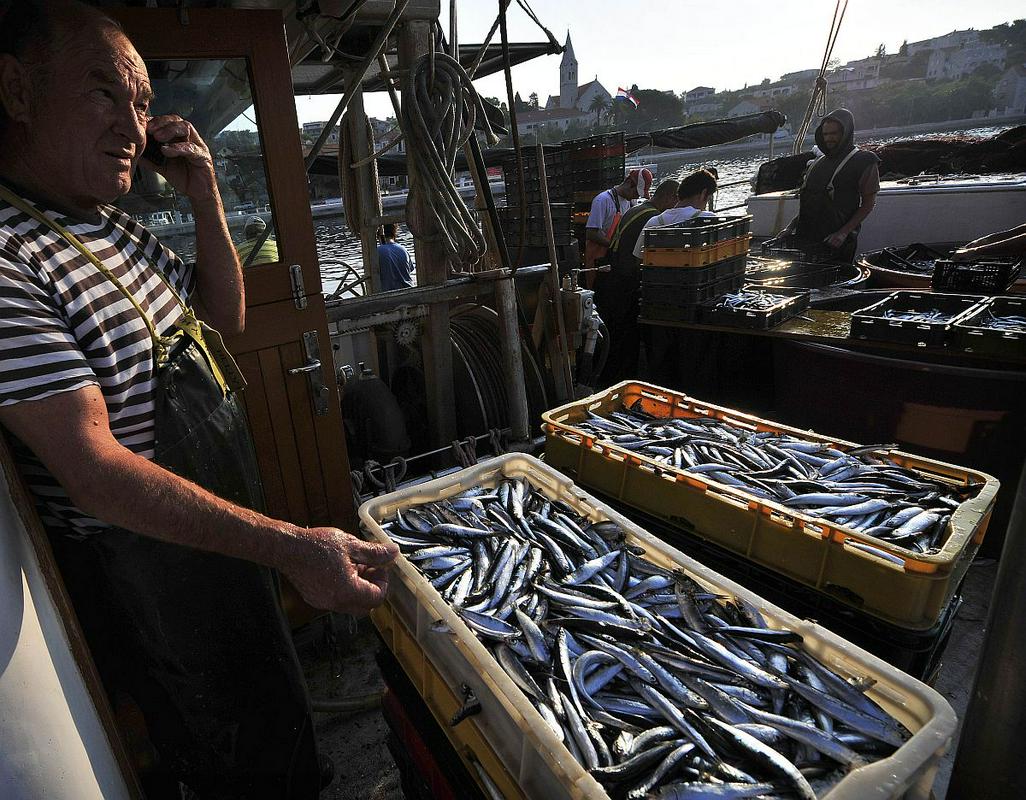In an increasingly competitive European economy, Slovenia's fishermen are finding it harder and harder to earn a living. But just as their numbers are dwindling, many Slovenians are taking a look back at the remarkable history of their homegrown fishing tradition, which dates back centuries.
It all began towards the end of the first millennium A.D., when the first Slavs, the ancestors of today's Slovenians, reached the Adriatic Sea north of modern-day Trieste. The terrain was unpromising, with high cliffs rising straight out of the sea, making access to the water unusually difficult. Safe harbors were few and far between, and frequent bora winds often made the sea treacherous.
Despite these unforgiving conditions, the early Slovenians turned out to be skillful fishermen. They made their way around the coastal waters in čupas, simple boats made from dug-out logs. The čupas were based on older boats that the proto-Slovenians had used on lakes and rivers, but they proved ideal for the Adriatic Sea. They were unusually agile and well-suited to the changing conditions of the Northern Adriatic; they were also easy to store during inclement weather. Later observers would even compare them with Native American canoes.
The Slovenian fishermen were handsomely rewarded: The coastal waters of the area were exceptionally rich in fish and other seafood, from sardines to squid and even tuna. When schools of tuna were sighted from the shore, observers known as “kolnarji” yelled to the fishermen, informing them of the potential catch. Soon, several thriving fishing villages emerged on the coast: Škedenj, Barkovlje, Križ, Kontiovel, Nabrežina, and Devin. Women from these villages often made rounds throughout the region selling the daily catch.
Eventually, the čupas began to be used for other activities besides fishing. They were used by the locals to access difficult-to-reach vineyards by the sea, and čupa regattas became common.
According to Bruno Volpi Lisjak, a historian of the Slovenian fishing tradition, the manufacture of čupas continued until the late 19th century. Some of the boats, however, were used all the way until World War II, and one of them is now on display at the Slovenian Ethnographical Museum in Ljubljana.
After World War I, the territory traditionally inhabited by the Slovenian fishermen became a part of Italy and Slovenia was later compensated with a 46-kilometer coastline to the south. Despite the difficult nature of their work, several Slovenian fishermen have continued with their age-old way of making a living.
Recently, after years of being almost forgotten, the history of Slovenian fishing has emerged from obscurity, thanks primarily to enthusiasts like Bruno Volpi Lisjak. A museum devoted to the Slovenian fishing tradition is set to open soon in the village of Križ – now Santa Croce, Italy. Its founders plan to introduce both Slovenian and Italian visitors to a way of life that played such an important part in shaping the Slovenian national identity.


































































